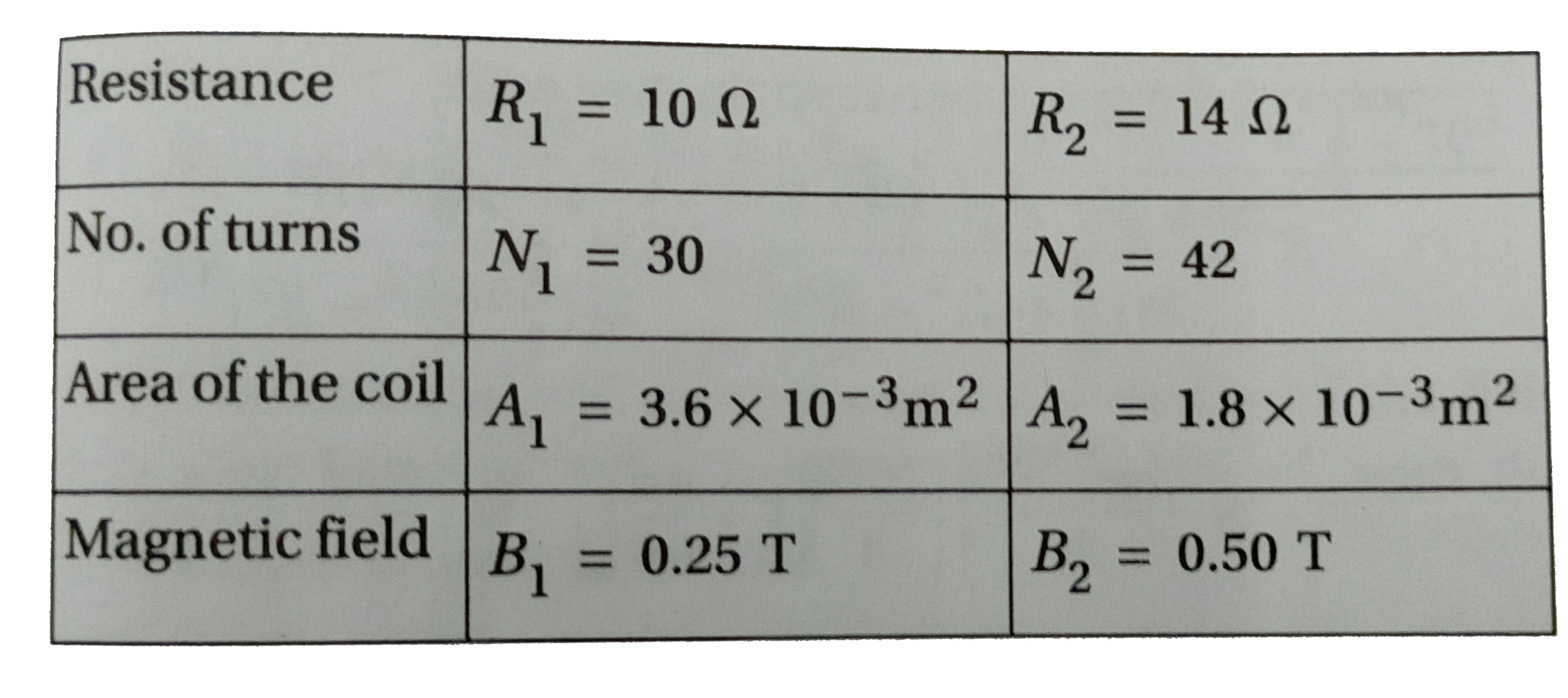Two charged particles traverses indentical helical paths in a completely opposite sense in a uniform magnetic field, →B=B0ˆK.Solution in Bengali
they have equal z-componenets of momenta
they must have equal charge
they necessarily represent a particle-antipartile pair
the charge to mass ratio satisfy (qm)1+(qm)2=0
The correct Answer is:D
The radius of the helical path, r=vsinθ(qb)B and the displacement of the charged paritcle along the magnetic field is one rotation
=2πvcosθ(qm)B
Two charged particles will traverse indentical path in opposite sense is qm for the both the particles is same and opposite.
Topper's Solved these Questions
- BOOK - CHHAYA PUBLICATIONCHAPTER - ELECTROMAGNETISM EXERCISE - NCERT EXAMPLAR QUESTIONS WITH ANSWER HINT (MCQ-2)4videos
ELECTROMAGNETISM
- BOOK - CHHAYA PUBLICATIONCHAPTER - ELECTROMAGNETISM EXERCISE - EXERCISE67videos
ELECTROMAGNETISM
- BOOK - CHHAYA PUBLICATIONCHAPTER - ELECTROMAGNETISM EXERCISE - NCERT TEXTBOOK QUESTIONS WITH ANSWER HINT25videos
ELECTROMAGNETISM
- BOOK - CHHAYA PUBLICATIONCHAPTER - ELECTROMAGNETIC WAVES EXERCISE - CBSE SCANNER17videos
ELECTROMAGNETIC WAVES
- BOOK - CHHAYA PUBLICATIONCHAPTER - ELEMENTARY PHENOMENA OF ELECTROSTATICS EXERCISE - EXAMINATION ARCHIVE2videos
ELEMENTARY PHENOMENA OF ELECTROSTATICS
Similar Questions
Consider a wire carrying a steady current I placed in a uniform magnetic field →B. Consider the charges inside the wire. It is known that magnetic forces do no work. This implies that
02:50View SolutionWhich of the properties of an isolated north pole, placed at a point in a magnetic field, is characterised by the direction of the tangent on the magnetic line of force passing through that point?
02:50View SolutionTwo moving coils meters M1andM2 have the following particulars :

(The spring constancs are identical for the two meters ).10:27View SolutionWhat are the directions of electric and magnetic field vectors relative to each other and relative to the direction of propagation of electromagnetic waves?
14:09View SolutionDefine surface density of electric charge
36:40View SolutionTwo charged particles traverse identical helical paths in a completely opposite sense in a uniform magnetic field →B=B0ˆK
02:30View SolutionTwo charged particles traverse identical helical paths in a completely opposite sense in a uniform magnetic field vec(B)=B_(0)hat(K)
05:20View SolutionA charged particle (q.m) released from origin with velocity v=v_(0)hati in a uniform magnetic field B=(B_(0))/(2)hati+(sqrt3B_(0))/(2)hatJ . Pitch of the helical path described by the particle is
View SolutionMagnetism (Circular and Helical Motion)|Variation of Path of a Charged Particle in Uniform Magnetic Field
02:59View SolutionHelical Path of a Charged Particle Inside Magnetic Field
09:37View SolutionTwo charged particles traverse identical helical paths in a completely opposite sense in a uniform magnetic field →B=B0ˆk.
09:37View SolutionTwo charged particles traverse identical helical paths in a completely opposite sense in a uniform magnetic field vec(B)=B_(0)hat(K)
03:43View SolutionTwo charged particules traverse identical helical paths in a completely opposite sense in a uniform magnetic field B=B0k
03:43View SolutionTwo charged particles traverse identical helical paths in a completely opposite sense in a uniform magnetic field →B=B0ˆK
03:24View Solutionदो आवेशित कण किसी एकसमान चुम्बकीय क्षेत्र B=B0k में पूर्णतः सर्वसम सर्पिल पथों पर विपरीत दिशाओं में गमन करते हैं तो इनके
06:11View Solution

